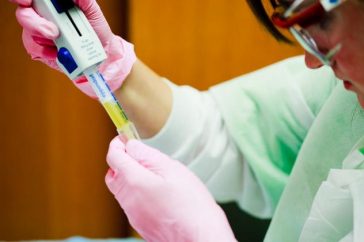
As scientists continue to learn more about the harmful impacts of PFAS on human health, regulators are taking action to reduce exposure by setting drinking water and food packaging limits. However, public health protection must go beyond the removal of exposure to include medical surveillance to identify early signs of disease.
For people who have elevated exposure to PFAS, screening for conditions associated with PFAS exposure may allow for early identification of diseases, enable treatment sooner, and potentially save lives. Yet, despite the potential benefits, people who know they are exposed to high levels of PFAS often face resistance from their medical providers in proactive screening for these health conditions.
Physicians are not typically trained in environmental health; rather, they are trained in acute health problems, not long-term environmental exposures. Consequently, they may lack the expertise to effectively support their patients with known PFAS exposure.
Public health experts agree that clear and consistent guidance on PFAS medical screening is urgently needed. In order to combat this knowledge gap, PFAS-REACH, a research partnership between Silent Spring Institute, Northeastern University, and Michigan State University, funded by the National Institute of Environmental Health Sciences, has developed guidance sheets for impacted communities and medical communities with science-based suggestions on medical screening for PFAS-exposed people.

